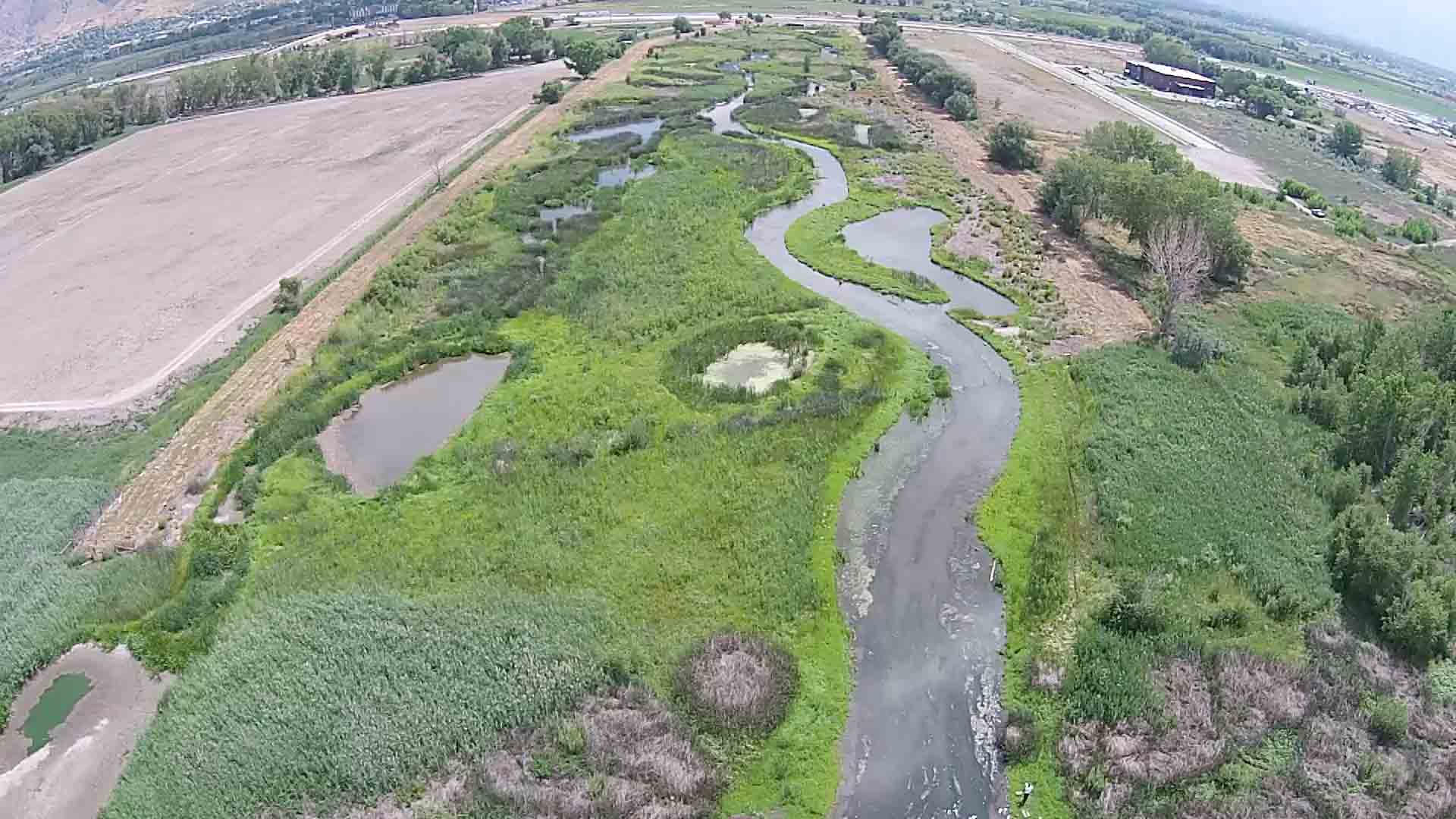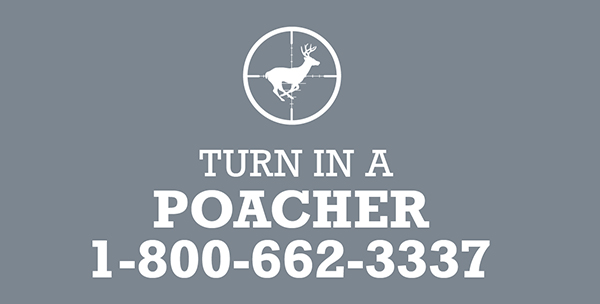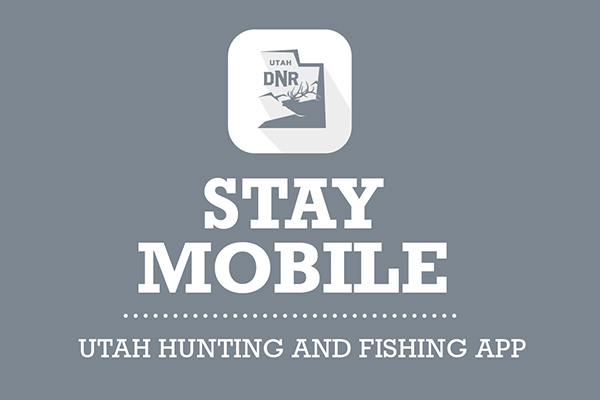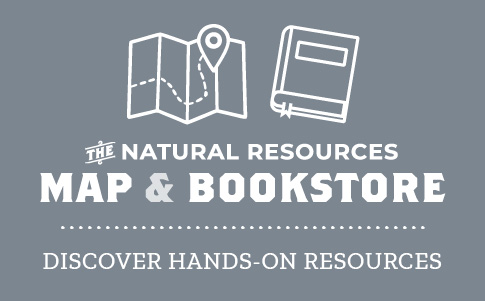Wildlife/Waterfowl Management Areas (WMAs)
Hobble Creek WMA
Wildlife Management Areas and Waterfowl Management Areas (both WMAs) are properties owned and managed by the Utah Division of Wildlife Resources for the following purposes:
- Conserving critical wildlife habitats
- Helping to minimize and mitigate wildlife damage on private property
- Providing places where Utahns can go to hunt, fish and enjoy wildlife-based recreation
License required for access at WMAs in four Utah counties
H.B. 309 is a new state law requiring anyone 18 years old or older to have a valid Utah hunting, fishing or combination license* to access a WMA in counties that are designated as "class one" or "class two" counties. This currently includes Davis, Salt Lake, Utah and Weber counties, based upon population.
List of WMAs that require a license for access:
- Birdseye WMA
- Blackhawk WMA
- Causey WMA
- Cinnamon Creek WMA (license required in the portion of the WMA located in Weber County)
- Dairy Fork WMA
- Farmington Bay WMA (license NOT required at the Eccles Wildlife Education Center and Hasenyager Reserve)
- Harold Crane WMA (license required in the portion of the WMA located in Weber County)
- Hobble Creek WMA
- Howard Slough WMA
- Lake Fork WMA
- Lasson Draw WMA
- Lee Kay WMA (previously called the Lee Kay Conservation Area; license NOT required for entrance to the shooting range)
- Loafer Mountain WMA
- Lower Hobble Creek WMA
- Middle Fork WMA
- Ogden Bay WMA
- Powell Slough WMA
- Provo Peak WMA
- Rock Island WMA
- Santaquin WMA (license required in the portion of the WMA located in Utah County)
- Spencer Fork WMA (license required in the portion of the WMA located in Utah County)
- Starvation WMA
- Timpanogos WMA
- Weber Face WMA
- West Hills WMA (license required in the portion of the WMA located in Utah County)
- Willard Bay Upland Game Area (license required in the portion of the WMA located in Weber County)
WMAs are primarily funded by the sales of Utah hunting, fishing and combination licenses and by federal excise taxes (which are paid on hunting and fishing equipment) — typically, state taxes do not pay for them. All license sales go toward conservation in Utah, so having a current license is a way to support wildlife conservation, land acquisition, management and habitat restoration at your favorite WMA and statewide.
Thank you for supporting Utah's fish and wildlife.
*Purchasing a fishing license fulfills the WMA access requirement. Completion of an approved Hunter Education program is required to obtain a hunting or combination (hunting and fishing) license.
What are WMAs and what is their purpose?
Currently, there are 149 WMAs throughout Utah, totaling over 500,000 acres, or 780 square miles. Each WMA ranges in size from a few dozen acres to over 50,000 acres.
Since the 1901 purchase of property to establish the state's first property, the state of Utah has acquired land to support our fish and wildlife. The Division first established WMAs in Utah in the 1920s to provide waterfowl habitat or winter ranges with feed and shelter to help deer and other big game animals survive in the snowy, winter months. The DWR and its partners manage these lands and implement habitat projects to help provide food and water to maintain healthy wildlife populations.
List of all Utah WMAs
WMAs
Each WMA operates according to its own habitat management plan. Some WMAs and portions of WMAs are closed to the public, while others have limited access during certain times of the year. Unlike other public or state-owned lands, WMAs are not multiuse lands, and the types of recreation allowed are limited. For details about whether you may enter a Utah WMA or what you are allowed to do there, check the Utah Wildlife and Waterfowl Management Areas map.
WMA FAQs
How does the DWR manage WMA properties?
For most WMAs, their primary purpose is to provide a winter range for wildlife — an area with food and shelter to help the animals survive the winter months. The Division works year-round and implements various projects with Utah's Watershed Restoration Initiative and the Habitat Council to ensure there is sufficient vegetation and healthy watersheds in these areas.
For areas that have been ravaged by wildfires, the Division rehabilitates the land, reseeding the ground to improve range conditions and stop the spread of weeds. In many cases, the Division will take preventative measures to reduce future wildfires, including removing excessive conifer trees.
Where does the funding come from for WMA maintenance and purchases?
WMAs have two major sources of funding:
- The U.S. Fish & Wildlife Service's Wildlife & Sport Fish Restoration Program. This program was created through the 1937 Pittman-Robertson Federal Aid in Wildlife Restoration Act and the Dingell-Johnson Sport Fish Restoration Act of 1950. Much of this funding comes from an excise tax on hunting and fishing equipment.
- The sale of Utah hunting and fishing licenses and permits, which is why hunting and angling are the primary recreational activities allowed on these lands. All license sales go toward conservation in our state, so purchasing a Utah license is a way to support wildlife conservation, land acquisition, management and habitat projects.
Note: Typically, state taxes in the general fund do not pay for the purchase and maintenance of WMAs in Utah, unless the legislature approves a specific request for appropriation (such one-time funds used for Cinnamon Creek WMA).
Which WMAs require a license for access as of May 7, 2025?
This law only applies to WMAs in counties that are designated as "class one" or "class two," which includes the following: Davis, Salt Lake, Utah and Weber. The law also updated the definition of a WMA, so there are 30 WMAs in the four counties where this new legislation applies.
I only go to WMAs in Davis, Salt Lake, Utah and Weber counties for general recreation (exercise, wildlife watching, photography, etc.). Do I still need a license to access them?
The law does not differentiate between activities conducted on the WMA. If you are accessing the WMA for hunting, fishing or any kind of general recreation — such as hiking, biking, camping, wildlife watching or photography — you must possess a valid license.
What about WMAs that straddle counties where the license requirements do and don't apply?
There are several WMAs that straddle county lines with different classifications. You must possess a hunting, fishing or combination license on the portion of the WMA that is located in Davis, Salt Lake, Utah or Weber county. Refer to the WMA table on this page and signage posted at the property that will specify which areas require a license for access.
What am I allowed/not allowed to do on a WMA?
Hunting and fishing are activities that are allowed on many WMAs, but visitors should note that some WMAs are closed during certain critical times of the year so that wildlife aren't disturbed.
Because WMAs are primarily intended to provide food and habitat for wildlife and are not established as multiuse public lands, they are not well suited for many other forms of outdoor recreation, including off-roading, mountain biking, etc., which could be destructive to habitat or disturb fish and wildlife. On some WMAs, these activities are prohibited, while on other WMAs, they may be allowed but only in certain areas. Check the Utah Wildlife and Waterfowl Management Areas map before planning a visit. Information about each WMA (and if a license is required for access) is also posted at the entrances.
Are there any exemptions to the license requirements on WMAs in Davis, Salt Lake, Utah and Weber counties?
The requirement to have a valid Utah hunting, fishing or combination license does not apply to:
- Anyone driving on a highway (as defined in Utah Code) that passes through a WMA.
- Individuals visiting or participating in an educational program at a DWR education center or facility located within a WMA.
- Those who hold a contract or other property right on the WMA, such as a special-use permit or an easement.
- Anyone under 18 years of age.
- DWR employees, federal employees, contractors, volunteers — and their agency-approved guests — who are conducting official duties. (All are required to have a valid license if they want to access a WMA outside of their official duties.)
- Sovereign lands (some of which are included in the boundary of Farmington Bay WMA) and Utah Reclamation Mitigation Conservation Commission properties (Provo River Delta, Diamond Fork and Utah Lake Wetland Preserve).
Do the Bonneville Shoreline Trail and the Great Western Trail have a public easement on the Timpanogos WMA?
The Bonneville Shoreline Trail does not have a public easement where it passes through the Timpanogos WMA. The DWR owns the surface rights, and as the surface owner, the DWR controls public access to those trails. The Great Western Trail is an off-shoot of the Bonneville Shoreline Trail and also does not have a public easement on the Timpanogos WMA.
However, on July 17, DWR entered into a special use permit with the Utah Division of Outdoor Recreation. The special use permit allows the Utah Division of Outdoor Recreation to maintain and update the Bonneville Shoreline Trail and the Great Western Trail — which run through a portion of the Timpanogos WMA — and to allow non-motorized access to the public who have utilized the trail prior to the passage of HB309. Under this special use permit, those recreating on the Bonneville Shoreline Trail and the Great Western Trail will not be required to have a hunting, fishing or combination license, so long as they stay on the designated trail.
As in the past, portions of the Timpanogos WMA are closed each year between Dec. 1 to April 15 to protect wintering wildlife. No permitted activities may take place on the WMA during this period.
If there is an event (e.g., bird festival, tour with congressional staffers from out of state), are nonresidents going to be required to obtain a license? Out-of-state licenses are much more expensive than resident licenses.
As long as the event is approved under a Special Use Permit, attendees of those activities will be covered under the SUP and not require a license.
Do I need a license to paddleboard on Causey Reservoir or to hike around the lake?
Causey Reservoir is on U.S. Forest Service land, and as such, does not fall under the license requirements for our wildlife and waterfowl management areas (unless you are fishing there, of course). Causey WMA does not include Causey Reservoir.
As for trails around the lake: the Wheatgrass Canyon Trail does pass through the Causey WMA, but the U.S. Forest Service has an easement for it where it passes through the WMA, so it would be exempt from the license requirements. However, the Baldy Ridge Trail does not have an easement where it passes through the WMA, so a license is required for that trail where it enters the Causey WMA from the U.S. Forest Service land.
What can I do to help the DWR care for WMAs?
Recent incidents of vandalism, littering and other criminal activity, as well as overcrowding, have caused issues at some WMAs and have led to closures. In addition, wildfires caused by target shooting have caused additional closures and destroyed necessary habitat for wildlife who utilize the areas. These types of incidents require expensive repairs and habitat rehabilitation.
The most important thing you can do as a visitor to a WMA is to follow the posted rules and refrain from doing anything that would hurt the animals or damage the habitat.








